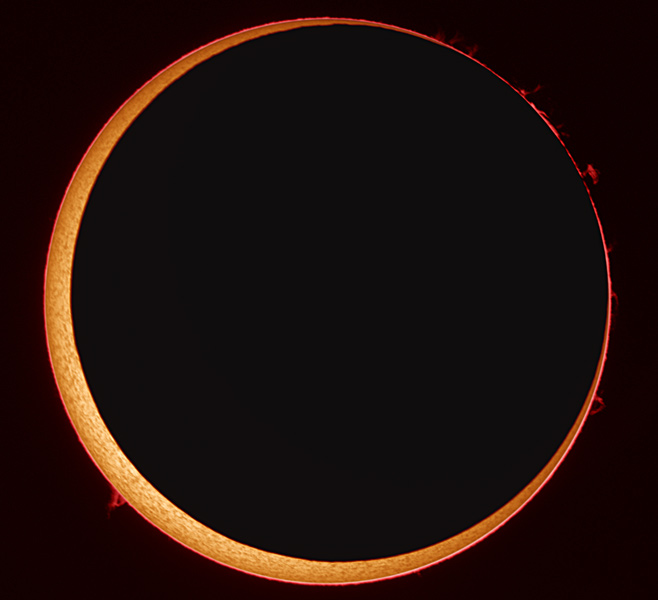
|
Credit & Copyright: Stefan
Seip
Explanation:
On Monday, part of the Sun went missing.
The missing piece was no cause for concern -- the Moon was only momentarily in the
way.
The event was not a
total eclipse of the Sun for any Earth-bound sky enthusiast
but rather, at best, an
annular eclipse, where
the
Moon blocked most of the Sun.
Because of the relatively large distance to the Moon during this
Earth-Moon-Sun alignment, the Moon did not have a large enough
angular size to block the
entire Sun.
Those who witnessed the solar eclipse from a
narrow path through
Spain and
Africa,
however, were lucky enough to see the coveted
Ring of Fire, a dark Moon completely surrounded
by the brilliant light of the distant Sun.
Pictured above is
a
Ring of Fire captured two days ago in unusually
high resolution above Spain.
The resulting image shows details of the
granular solar surface as well as many
prominences around the Sun.
|
January February March April May June July August September October November December |
| |||||||||||||||||||||||||||||||||||||||||||||||||||||||
NASA Web Site Statements, Warnings, and Disclaimers
NASA Official: Jay Norris. Specific rights apply.
A service of: LHEA at NASA / GSFC
& Michigan Tech. U.
Based on Astronomy Picture
Of the Day
Publications with keywords: annular solar eclipse - prominence
Publications with words: annular solar eclipse - prominence
See also:
- Ring of Fire over Easter Island
- APOD: 2024 October 8 Á Annular Eclipse over Patagonia
- APOD: 2024 September 2 Á A Triangular Prominence Hovers Over the Sun
- APOD: 2024 August 18 Á A Solar Prominence Eruption from SDO
- APOD: 2024 July 28 Á Sun Dance
- APOD: 2023 November 1 Á Annular Solar Eclipse over Utah
- A Sunrise at Sunset Point
